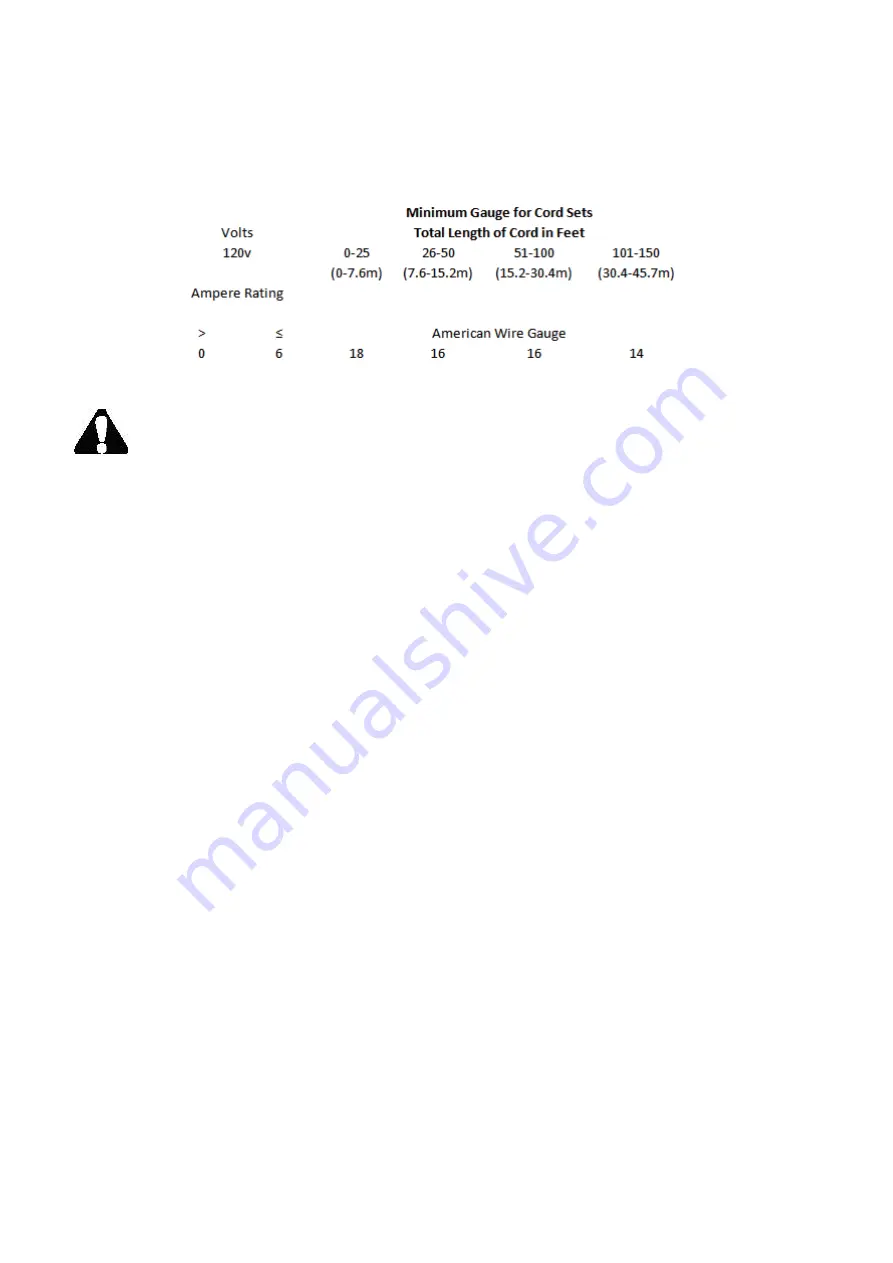
8
When using an extension cord, be sure to use one heavy enough to carry the current your product will
draw. An undersized cord will cause a drop in line voltage resulting in loss of power and overheat-
ing. The following table shows the correct size to use depending on cord length and nameplate
ampere rating. If in doubt, use the next heavier gauge. The smaller the gauge number, the heavier the
cord.
Cutting Procedures
WARNING:
Keep hands away from the cutting area and the saw blade.
Do not reach underneath the workpiece. The guard cannot protect you from the blade below the
workpiece.
Adjust the cutting depth to the thickness of the workpiece. Less than a full tooth of the blade teeth
should be visible below the workpiece.
Never hold piece being cut in your hands or across your leg. Secure the workpiece to a stable
platform. It is important to support the work properly to minimize body exposure, blade binding, or
loss of control.
Hold power tool by the insulated gripping surfaces, when performing an operation where the cutting
tool may run into hidden wiring. Contact with a “live” wire will make ex- posed metal parts of the
tool “live” and shock the operator.
When ripping always use a rip fence or straight edge guide. This improves the accuracy of cut and
reduces the chance of blade binding.
Always use blades with correct size and shape (diamond versus round) of arbor holes. Blades that do
not match the mounting hardware of the saw will run eccentrically, causing loss of control.
Never use damaged or incorrect blade washers or bolt. The blade washers and bolt were specially
designed for your saw, for optimum performance and safety of operation.
Kickback causes and related warnings
–
Kickback is a sudden reaction to a pinched, bound or misaligned saw blade, causing an uncon-
trolled saw to lift up and out of the workpiece toward the operator;
–
When the blade is pinched or bound tightly by the kerf closing down, the blade stalls and the
motor reaction drives the unit rapidly back toward the operator;
–
If the blade becomes twisted or misaligned in the cut, the teeth at the back edge of the blade can
dig into the top surface of the wood causing the blade to climb out of the kerf and jump back toward
the operator.
Maintain a firm grip on the saw and position your arms to allow you to resist kickback force. Always
stay to the side of the saw blade, never putting the saw blade in line with your body. The saw can
jump backwards in the event of kickback, but the operator can control kickback force if proper
precautions are taken.
When blade is binding, or when interrupting a cut for any reason, release the trigger and hold the saw
motionless in the material until the blade comes to a complete stop. Never attempt to remove the saw
from the work or pull the saw backward while the blade is in motion or kickback may occur.
Investigate and take corrective actions to eliminate the cause of blade binding.
Summary of Contents for 97615L
Page 2: ...2...
Page 18: ...18 EXPLODED VIEW 73 72...







































